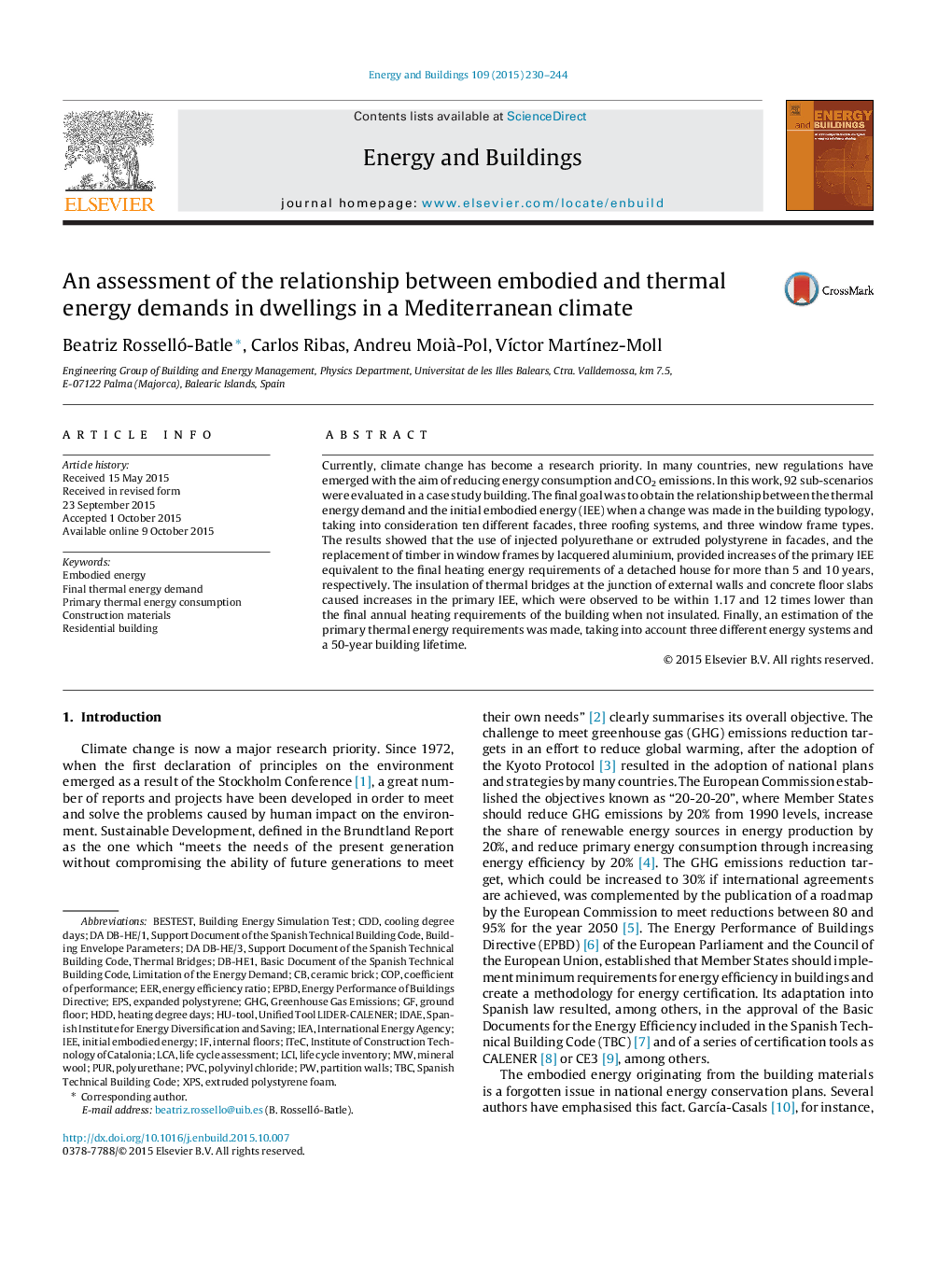| Article ID | Journal | Published Year | Pages | File Type |
|---|---|---|---|---|
| 6730980 | Energy and Buildings | 2015 | 15 Pages |
Abstract
Currently, climate change has become a research priority. In many countries, new regulations have emerged with the aim of reducing energy consumption and CO2 emissions. In this work, 92 sub-scenarios were evaluated in a case study building. The final goal was to obtain the relationship between the thermal energy demand and the initial embodied energy (IEE) when a change was made in the building typology, taking into consideration ten different facades, three roofing systems, and three window frame types. The results showed that the use of injected polyurethane or extruded polystyrene in facades, and the replacement of timber in window frames by lacquered aluminium, provided increases of the primary IEE equivalent to the final heating energy requirements of a detached house for more than 5 and 10 years, respectively. The insulation of thermal bridges at the junction of external walls and concrete floor slabs caused increases in the primary IEE, which were observed to be within 1.17 and 12 times lower than the final annual heating requirements of the building when not insulated. Finally, an estimation of the primary thermal energy requirements was made, taking into account three different energy systems and a 50-year building lifetime.
Keywords
IEEHDDLCITBCEPBDIEACOPEPSGHGCDDEERCeramic brickInternational energy agencyLCALife Cycle AssessmentGreenhouse gas emissionsEmbodied energyBESTestpurHeating degree daysCooling degree daysResidential buildingcoefficient of performanceXPSEnergy performance of buildings directiveConstruction materialsLife Cycle Inventoryenergy efficiency ratiomineral woolExpanded polystyrenePVCPolyurethanePolyvinyl chloride
Related Topics
Physical Sciences and Engineering
Energy
Renewable Energy, Sustainability and the Environment
Authors
Beatriz Rosselló-Batle, Carlos Ribas, Andreu Moià -Pol, VÃctor MartÃnez-Moll,
